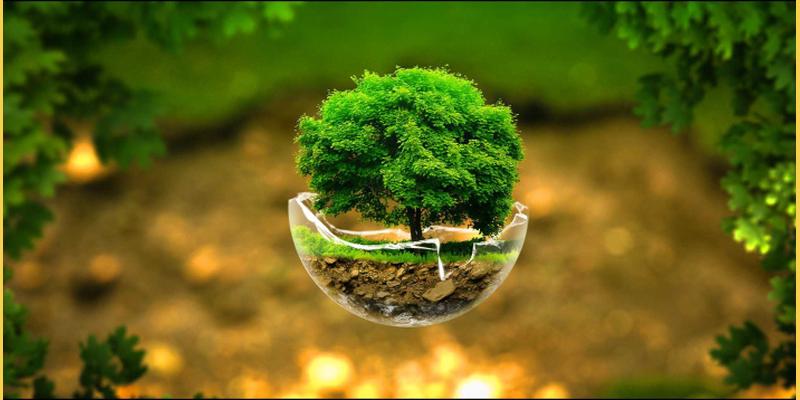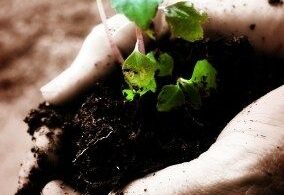Radko Tichavsky is a Czech born Mexican Agrohomeopath. He is a co-founder and director of Instituto Comenius in Mexico and author of Handbook of Agrohomeopathy, 2007 (Spanish) and Homeopathy for Plants, 2009 (Spanish) and creator and teacher of Holohomeopathy.
Agrohomeopathy Course!
Radko Tichavskyi is now offering a one semester virtual course in Agrohomeopathy (in English). You can learn how to define and analyze holons and how to repertorize the specific homeopathic treatment beyond just disease or pest names. You can find out more here: www.icomenius.edu.mx
A Materia Medica and Repertory for Plants: Mark Moodie hosts the website “Considera”, which provides a growing M.M and Repertory for plants and discusses resources for biodynamics and Agrohomeopathy .The website allows the world community to contribute their experiences in planting. https://considera.org/hrxmatmed.htm
Dear Dr. Tichavsky,
I am Dr. Rekha working at the government homeopathic dispensary in Ranni, Pathananthitta, Kerala India. Can you make any suggestions for controlling the White Fly that attacks the tomato plants?
Thank you
Dr. Rekha
Radko Tichavsky:
Dear Dr. Rekha,
Starting from the premise that homeopathy is always applied under the principle of individualization, my advice must be adjusted to each specific crop. As a preamble, it must be said that many wildest varieties of tomato are practically free from attack by white fly, and some hybrid varieties seem to have biochemicals that attracts them powerfully. The white fly is the popular name for different insects, for example Bemisa tabaci, Tryaleurodes vaporarorium and others) that attack mainly crops with excess nitrogen (for example, excess cow manure or other manure of animal origin), and with the lack of calcium, the plants that present this group of deficiencies and nutritional toxicity develop large and soft tissues that facilitates the insect to suck the sap.
The homeopathic remedies that can correct this imbalance (a precondition to the attack of white fly) are Calcarea carbonica 6 CH, Ammonia carbonica 30 CH and Carbo vegetabilis 6 CH, and of course the agriculturists have to stop applying nitrogen fertilizers of synthetic or animal origin.
Once the tissue of the tomato has hardened, the white fly will be present but it will not be able to penetrate the epidermis of the plant, but it will wait for new and tender leaves to re-irritate. Then there comes into action a second group of homeopathic remedies containing semiochemics, insect metabolites dedicated to attract or repel certain insects. To use them correctly I would need to know exactly what white fly this is. Assuming that it is Bemisia tabaci for example, this compound is specifically the allomona Beta-ionone which is present in different insects. One way is to identify the insects with the beta-ionone content, (which can be difficult for those who have no familiarity with the entomology), and prepare a homeopathic remedy of low potency and apply it.
Another way is to prepare homeopathically the plants that contain this compound, for example the flowers of Anthurium sp. Narcissus sp., Cattleya sp. Lantana camara and Rosa sp., that contain the beta-ionone and the remedies prepared from them can serve to repel the white fly. Likewise we use homeopathic remedies prepared from seeds of Daucus carota, of the roots of Coleus barbatus and from the plant Valeriana officinalis at 6 CH or Hypericum perforatum at 6 CH.
It is important to motivate the tomato producers to intersperse the accompanying plants among the tomato plants and not only form monocultures. They can use mainly fennel, basil, rosemary, citronella perlargonium and others that have allelopathic effects with the white fly and attract parasitoid insects of the white fly. Maintaining a rigorous mulching in all crops will also help maintain the balance between beneficial insects and pathogens.
[hr]
Dear Dr Tichavsky,
Thank you for all your advice and good work. I wonder if you could advise me on the following. I live in Greece and we have a big problem with the olive fruit fly, (Bactrocera oleae) in our olive trees, which destroys the crop every year.
The trees are in the south of the Peloponnese 35 km south of Kalamata. There are trees that are 40 years old, but also trees that are 100 years old, maybe more. There is grass and weeds around them. Part of the trees are growing on soil that is for 20 cm real red soil, and the rest is more limestone on a hillside. The big trees are not on the hillside and have much more red soil. We water the small trees in the summer because they struggle much due to lack of good soil when there is a long period of no rain. The big trees can manage without extra water even in the summer.
Thank you
Trudy Alijk
Radko Tichavsky:
Dear Trudy, the olive trees receive lately greater pressure due to the climatic changes and the consequent diminution of their vitality. As a basic principle you have to maintain a good mulching in your garden and worry about cutting it from time to time and leaving it in the same place so that it forms a protective mulching for the soil and microrganisms that reduces the evaporation of water from the soil and helps the trees to be in better comfort and microbiological biodiversity.
The Batrocera oleae has many natural enemies which you have to know how to attract through homeopathy. The attractant compounds of Psyttalia concolor (one of the important parasitoids of B. oleae and also of Ceratitis capitata) are for example butyl butyrate, butyl hexanoate, ethyl octanoate, pelargonic acid, caprinic acid, or lauric acid and z9-23Hy, among other compounds.
Some of them are present in plants that are easy to obtain. For example, butyl hexanoate and and ethyl octanoate are in the fruit of the papaya, or pelargonic acid in Pelargonium graveolens and Hibbiscus sabdarifa or caprinic acid in coffee and wheat grains or lauric acid in the fruit of coconut. Then these plants are applied as homeopathic preparation attractors of this important parasitoid. In this case it is important to understand that the solutions to the plants and diseases are not to apply homeopathy to kill insects directly (how many producers would be tempted to do), but in this case we would only get a dangerous suppression and finally increase the lethality of the plague.
It is necessary to know how to ask the holon (natural environment) for its intervention and mark the appropriate semiochemical to express this request in the appropriate language for nature. Insects and plants always do communicate by means of homeopathic doses. In this case our patient is the holon (the vital set that frames your olive trees) and not the olive trees separately. Changing the focus and seeing the bigger picture will allow you to understand that the pests and diseases in your trees are nothing more than symptomatology of imbalances in the holon. Once the imbalance is harmonized the pests disappear, which might seem like magic, but is certainly not so. They disappear by a conscious repertorization based on metabolic similarities between plants, insects and other parts of the holon, applied and communicated to the holon by means of homeopathy.
In April I will be giving some seminars in Kreta and Athenas. Maybe you could attend one of them and learn more about how to repertorize, prepare and apply the homeopathic remedies in your holon. You can communicate with Διονύσης Λουκάς, στο τηλ. 6942-642707 ή στο e-mail: [email protected] (Ηράκλειο Κρήτης) Μαργαρίτα Γκέκα στο τηλ. 6973-730291 ή στο e-mail: [email protected]
[hr]
Dr. Mr. Tichavsky
This year our strawberry crop suffered much from Gray Mold (Botrytis rot).
We’re looking for a non- toxic and holistic approach to solving the problem. We live in Wayne, New Jersey (U.S.) Zipcode 07470. We have moderate temperatures and rainfall. Summer temperatures range from 70 Farenheit to 95 F.
Here is an article about Gray Mold : https://content.ces.ncsu.edu/botrytis-cinerea-botrytis-fruit-rot-and-blight-on-strawberry
Thank you!
Arlene Kline
Dear Arlene,
The condition of Botrytis is due to the deficiency of calcium, phosphorus and magnesium in the plants and due to the excess of nitrogen. The homeopathic remedy to resolve this deficiency and toxicity is Calcaria phosphorica 6 CH and Ammonium carbonicum 30 CH. Do not use artificial fertilizers or fresh or composted animal excrement. Just apply compost made from plants.
As for Botrytis, this fungus has many antagonistic companions in the kingdom of fungi that base their fighting strategy on different compounds, for example gamma aminobutyric acid, glutamic acid, alanine or succinates, to mention some. In the control of Botrytis we use Lentinus edodes (you can get it in oriental stores where it is known as shiitake). Prepare a mother tincture in alcohol and potentize to the potency 6 CH. Manihot esculenta (yucca) application made from the root of the plant can also serve.
[hr]
Greetings Mr. Tichavsky,
I’ve had an issue with aphids ruining my pepper crop. My land is in Jefferson County, Arkansas (U.S.). Zipcode: 71601 Annual High Temperature: 72.8°F,
Annual low temperature: 52.5°F, Average temperature: 62.65°F. Average annual precipitation – rainfall: 49.57 inch
Aside from remedies, is there a good way to attract ladybugs (and keep them there), which seem to be the natural enemy of aphids?
Thank you
Albert Ross
Dear Albert,
I congratulate you for your question because it denotes your understanding of the dynamics of the holon. The aphids have many natural enemies, among them the coccinellids, You could ask “how to kill the aphids”, but you also want to know how to attract by means of homeopathy the ladybugs. This fills me with happiness.
Ladybugs are not one type of insect but many similar ones known by the popular name ladybugs (for example Hippodamia convergens, Cycloneda sanguinea, Coleomegilla maculata, Olllav-nigrum and many others).
The most important homeopathic remedy to attract the ladybugs is a bionosode made from the aphids. Capture the live aphids, choose the most vital and largest insects, place them in alcohol to make the mother tincture. After a week you can make from this tincture a 6CH potency. Spraying this on the holon you signal the presence of the aphids and it represents an important attraction for the coccinellids, who come automatically to your garden.
In addition, there are some specific semiochemical compounds for each of the different coccinelids. For example, Hippodamia convergens, is attracted to methyl salicylate, a substance present in several plants Trifolium pratense, Carica papaya flower, Morus alba, Ruta graveolens, Viola tricolor, and Chenopodium ambrosoides for example. If you make mother tincture of any of the mentioned plants and apply the 6 CH potency and spraying it on your holon, many Hippdamia convergens will come to see what happened and will eliminate the aphids from your crop. It is wonderful to note that the holon never fails in this solidarity, and always comes to the call of those who know how to speak its language.




